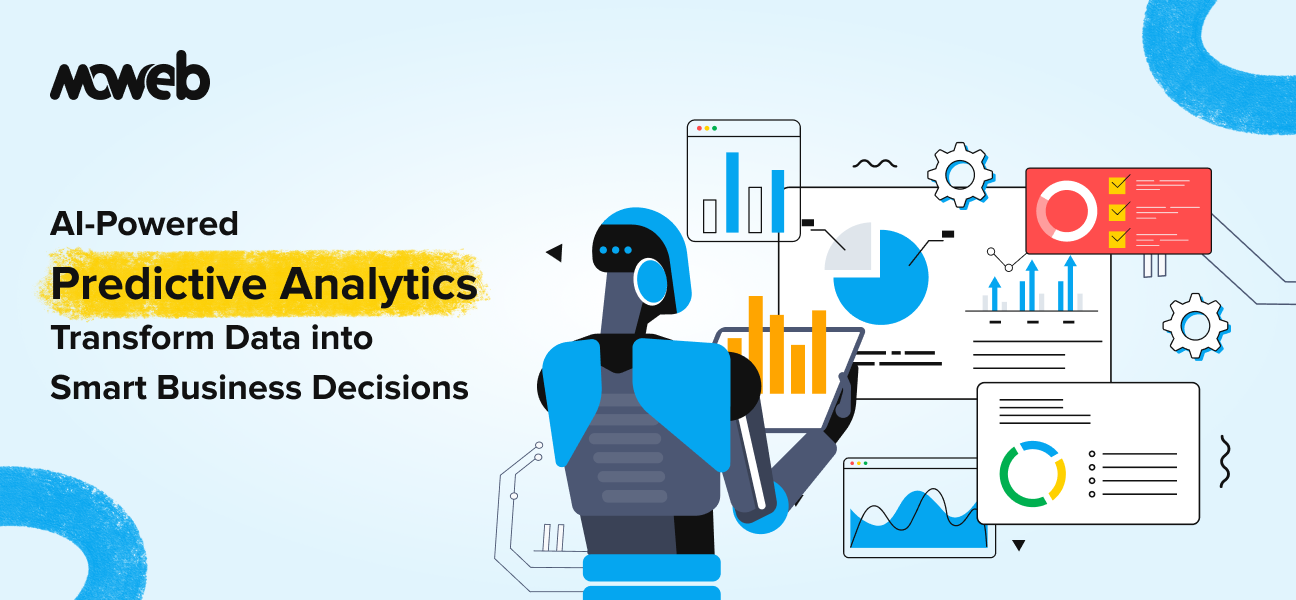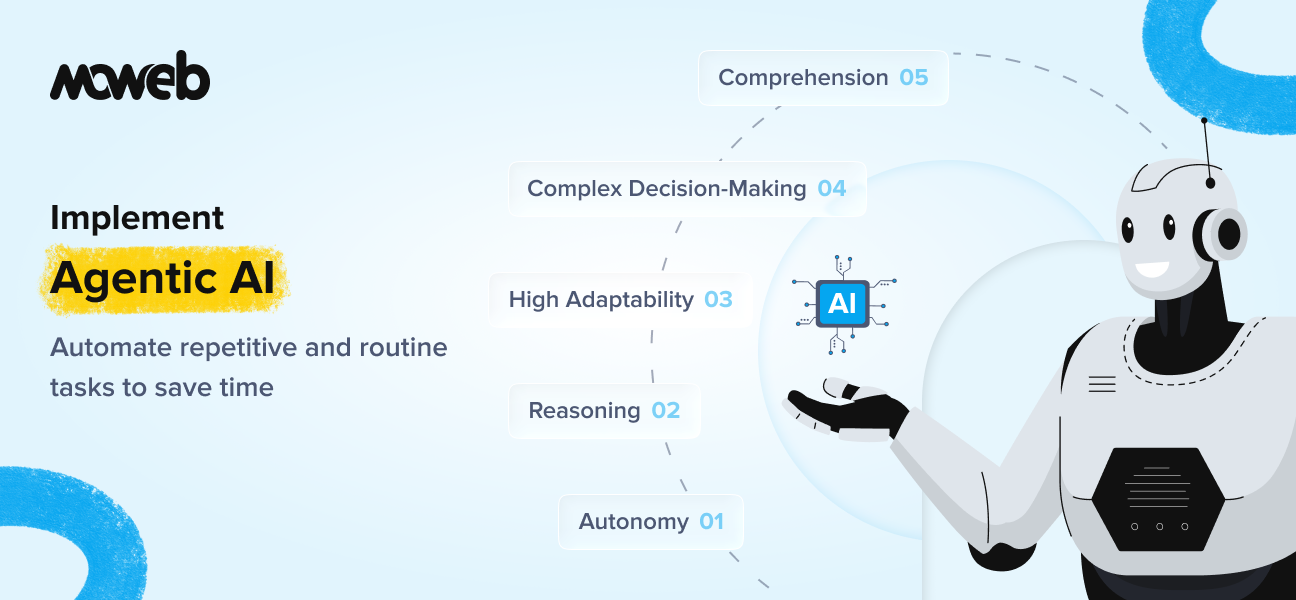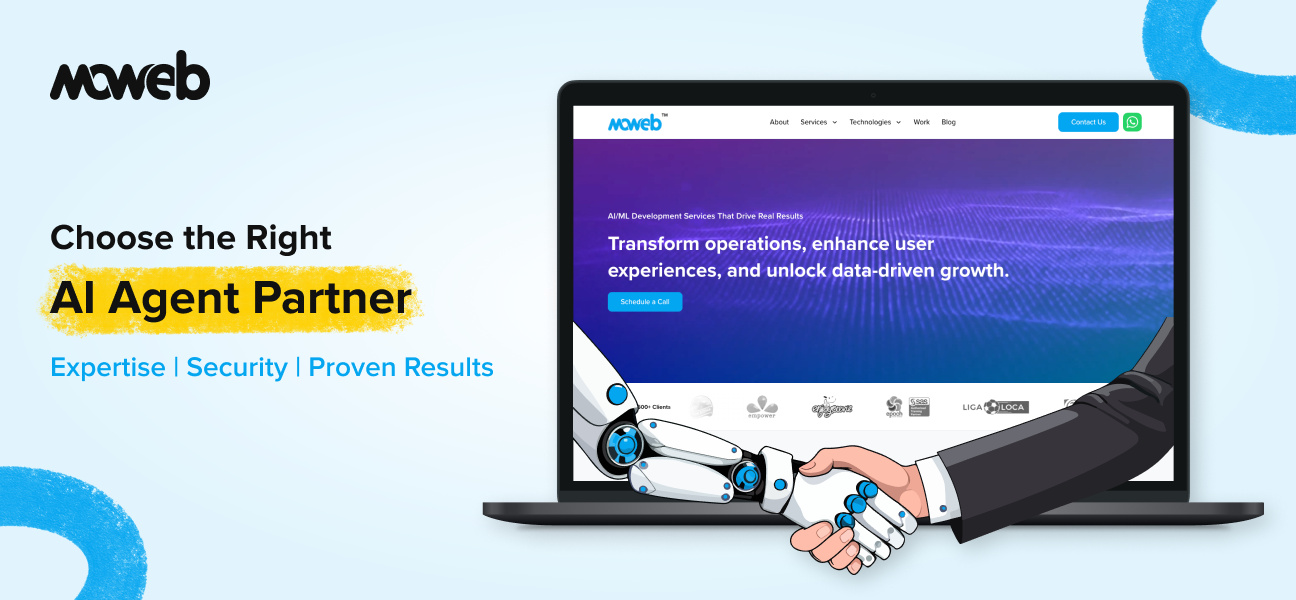
The growth of digital commerce has completely changed how people shop, but it has also made competition fierce. Therefore, winning requires more than a good website and product selection. It requires data-driven foresight. AI predictive analytics in e-commerce is swiftly becoming the key to understanding customer behavior, forecasting demand, managing inventories, and creating personalized buying journeys.
For eCommerce leaders, the business challenge is complex. Customers expect seamless personalization, and businesses must manage fluctuating demand and constantly optimize pricing. Traditional reporting methods provide a look at what already happened, but what businesses really need is insights into what will happen next. That is where predictive analytics steps in. It is an AI-powered transformational technology that helps drive smarter, customer-centric strategies.
What is AI Predictive Analytics in E-commerce?
Predictive analytics e-commerce platforms use historical and real-time data to forecast outcomes such as customer purchases, inventory needs, or churn probability. Unlike descriptive reports that show past activities, predictive analytics empowers businesses to anticipate future actions with accuracy.
The real difference lies in foresight versus hindsight. While traditional dashboards only explain why sales dipped last month, predictive modeling helps forecast which product might disrupt next and why.
Key technologies that power AI-driven e-commerce solutions include:
- Machine Learning (ML) to recognize patterns in customer data.
- Natural Language Processing (NLP) to analyze customer reviews and intent.
- Recommendation Algorithms for product suggestions and upselling.
- Big Data Analytics to process and analyze millions of transactions in real time.
By combining these AI tools, businesses can implement AI predictive analytics in e-commerce to create targeted campaigns, build optimized supply chains, and deliver superior shopping experiences.


Ready to Unlock AI for Your Business?
Contact us to get a personalized quote and start building your custom AI solution today!
Why Implement Predictive Analytics in E-commerce?
The adoption of e-commerce predictive analytics solutions delivers significant benefits such as:
- Improved Sales Forecasting: Accurately predicting seasonal demand prevents lost sales or excess stock.
- Optimized Pricing: Dynamic algorithms adjust prices according to demand, competition, and customer intent.
- Better Inventory Management: Predictive models minimize stock-outs and overstock situations, optimizing warehouse costs.
- Enhanced Personalization: AI-powered personalization in e-commerce increases engagement by offering highly relevant product recommendations.
Some practical applications include:
- Demand forecasting with AI to anticipate spikes during holidays or flash sales.
- Detecting fraudulent activities with predictive fraud detection models.
- Performing predictive customer behavior analysis for remarketing campaigns.
Strategically, adopting AI-powered predictive analytics services means moving from reactive problem-solving to proactive decision-making. Ultimately, it’s all about maximizing customer lifetime value and minimizing risks.
Steps to Implement Predictive Analytics in E-commerce
Step 1: Identify Key Use Cases
Understand where AI can deliver the most impact. The most valuable applications include:
- Customer churn prediction
- Upsell and cross-sell recommendations
- Dynamic product pricing models
- Fraud detection
By analyzing the customer journey and pain points, brands can map out the highest ROI opportunities for predictive analytics integration services.
Step 2: Assess Data Sources and Infrastructure
Quality data propels AI. Transaction histories, browsing patterns, past interactions, and customer sentiment all serve as inputs. Tools like ERP, CRM, and e-commerce platforms such as Shopify, Magento, and WooCommerce streamline data collection. Preparing infrastructure for real-time AI-driven e-commerce solutions ensures predictive insights scale effectively.
Step 3: Select the Right Predictive Analytics Tools
Businesses can choose from cloud-based SaaS tools, in-house AI frameworks, or hybrid models. Modern commerce platforms like Adobe Commerce integrate seamlessly with predictive models. Organizations also leverage open-source frameworks such as TensorFlow, Scikit-learn, or PyTorch to customize their predictive analytics e-commerce platform.
Step 4: Build and Train Your Predictive Models
Developers feed historical datasets into AI models, training them to identify correlations in purchase behaviors and inventory cycles. Models are then aligned with outcomes like demand forecasting with AI, personalized recommendations, or fraud detection. Balancing automation with interpretability is critical so business teams understand AI-driven decisions.
Step 5: Pilot Testing and Measurement
Before full deployment, businesses launch pilot projects. For instance, a pilot may target predictive recommendations for one product category. Success metrics include conversion rate lifts, improvements in customer retention, or increased average order values. Algorithms are fine-tuned based on real-world validation.
Step 6: Full-Scale Deployment and Governance
After successful pilots, implement predictive analytics in e-commerce across sales, supply chain, and customer support. Establishing AI governance ensures fairness, bias reduction, and privacy compliance. Regular monitoring frameworks under GDPR or CCPA safeguard customer trust while keeping models updated with new data.
Real-World Predictive Analytics Use Cases in E-commerce
E-commerce brands across the world have already seen results with:
Customer behavior prediction for targeted remarketing campaigns
Predictive analytics analyzes customer data to identify buying patterns and preferences. This enables targeted remarketing campaigns that reach customers with personalized offers at optimal times. By focusing on those most likely to convert, businesses increase engagement, reduce churn, and maximize marketing ROI through highly relevant messaging.
Inventory forecasting to reduce stock-outs and overstock
AI-powered demand forecasting predicts product sales by SKU, region, and season, helping e-commerce brands maintain optimal inventory levels. This reduces costly stock-outs and overstock situations, ensuring availability for high-demand items while minimizing holding costs and dead stock. Accurate forecasting improves supply chain efficiency and customer satisfaction.
Personalized product recommendations and AI-powered upselling
Machine learning models analyze past purchase behavior and browsing history to suggest relevant products in real time. Personalized recommendations and upsell offers increase average order value and enhance the shopping experience. This dynamic personalization boosts customer loyalty, driving repeat purchases and higher lifetime value.
Predictive fraud detection for secure transactions
Predictive analytics identifies unusual transaction patterns and flags potentially fraudulent activities before they impact customers. AI models continuously learn from new data, improving accuracy and reducing false positives. This strengthens security, protects revenue, and builds trust by ensuring safer e-commerce environments.
Dynamic pricing models to stay competitive
AI-based pricing engines adjust product prices in real time by analyzing demand fluctuations, competitor pricing, and inventory status. Dynamic pricing helps e-commerce businesses stay competitive, maximize profits, and respond swiftly to market changes. It balances customer affordability with revenue optimization for sustained growth.
Challenges in E-commerce Predictive Analytics
Predictive analytics is revolutionizing e-commerce by enabling smarter, data-driven decisions. However, businesses face several challenges in implementing these advanced solutions.
- Data fragmentation across multiple platforms creates integration difficulties and inconsistencies.
- Ensuring high model accuracy and gaining team buy-in remain critical business challenges.
- Protecting customer data privacy and security is essential to avoid breaches and maintain trust.
- Ethical concerns arise around personalization that respects consumer rights and preferences.
- Transparent algorithms & strict compliance with GDPR, CCPA, and other laws are necessary to mitigate risks.
Future Trends of Predictive Analytics in E-commerce
AI technologies are opening exciting future opportunities that will further transform the industry. Here are some trends and predictions:
Hyper-Personalization through Advanced AI Models
Advanced AI models enable hyper-personalization by analyzing vast customer data to deliver highly tailored shopping experiences. This micro-segmentation boosts customer engagement and loyalty by anticipating individual needs and preferences with precision.
Real-Time Predictive Insights with AI Agents
AI agents provide real-time predictive insights during customer interactions, helping brands make instant, data-driven decisions. This ensures personalized recommendations and optimized experiences at every touchpoint, enhancing satisfaction and conversion rates.
Cross-Channel Predictive Engagement (Voice Shopping, AR Experiences)
Cross-channel predictive engagement uses AI to create seamless experiences across voice shopping, augmented reality (AR), and traditional platforms. Customers can interact, explore, and purchase products effortlessly, driven by intelligent, synchronized predictive analytics.
Multi-Agent AI Systems for Supply Chain and Customer Lifecycle Management
Multi-agent AI systems coordinate various aspects of supply chains and customer lifecycle management. By collaborating across departments, these intelligent agents optimize inventory, anticipate demand shifts, and personalize marketing efforts throughout the customer journey.
Integration of Generative AI in Building Predictive Content Strategies
Generative AI enhances predictive analytics by creating data-informed, personalized content strategies. Using AI-generated insights, e-commerce brands craft engaging marketing content that resonates with target audiences, driving traffic and boosting conversions.
How a Technology Partner Can Help
Moweb stands out as a strategic technology partner for deploying AI-powered predictive analytics services in e-commerce. With extensive experience in custom AI/ML development, web and mobile app integration, and enterprise-grade e-commerce platforms, Moweb delivers end-to-end solutions that help businesses with predictive analytics e-commerce platforms.
Our services include identifying key use cases such as predictive customer behavior analysis and demand forecasting, building custom AI models aligned with business goals, and seamless integration with popular platforms like Shopify and Magento. Moweb also focuses on training client teams to ensure smooth adoption and scaling of predictive analytics solutions. By leveraging Moweb’s expertise, businesses can implement pilot projects that drive measurable improvements in sales forecasting, inventory management, and personalized customer experiences.
For example, Moweb has helped retailers build predictive systems that optimize inventory replenishment and launch targeted marketing campaigns based on real-time data insights. This end-to-end approach enables brands to harness the full potential of AI predictive analytics in e-commerce, driving growth, efficiency, and competitive advantage in today’s digital marketplace. Partnering with Moweb means access to expert guidance, scalable technology, and proven success in transforming e-commerce businesses.
Conclusion
Predictive analytics is boosting ecommerce by helping businesses increase profits & create hyper-personalized customer experiences. By leveraging AI-powered predictive analytics services, brands can forecast demand, optimize inventory, personalize marketing, and reduce risks. This data-based approach drives smarter decisions and a stronger competitive edge in digital commerce.
Starting with one focused use case, such as demand forecasting or personalized recommendations, is a practical way to begin. Once you understand, scaling predictive analytics across the e-commerce platform will unlock greater efficiency and growth. Explore e-commerce predictive analytics solutions today to accelerate success and sharpen customer insights for a lasting impact.
Looking for expert-guided AI predictive analytics in e-commerce? Partner with our artificial intelligence development company and custom software development company to implement scalable, AI-powered personalization and demand forecasting.
FAQs
What is predictive analytics in e-commerce and how does it work?
AI predictive analytics in e-commerce uses historical and real-time data to forecast future customer behaviors and business outcomes. Through machine learning and advanced modeling, it provides actionable insights to optimize marketing, inventory, and personalization, and improve overall sales performance using predictive analytics e-commerce solutions.
Which areas of e-commerce benefit most from predictive analytics?
Key areas benefiting from e-commerce predictive analytics solutions include sales forecasting, inventory management, dynamic pricing, fraud detection, and personalized customer experiences. These AI-driven e-commerce solutions help businesses minimize risks, boost revenues, and improve operational efficiency by anticipating demand and customer behavior.
How can predictive analytics improve customer experiences?
Predictive analytics enables AI-powered personalization in e-commerce by analyzing purchase history and browsing patterns to deliver tailored recommendations and offers. It enhances engagement, increases conversion rates, and builds customer loyalty by creating highly relevant, timely shopping experiences across touchpoints.
What data is required to implement predictive analytics?
Successful predictive analytics integration services rely on structured quality data such as transaction records, customer interactions, browsing behavior, CRM, and ERP data. Comprehensive datasets ensure better model training, reliable demand forecasting with AI, and accurate predictive customer behavior analysis.
How to ensure ethical and privacy-compliant use of AI in e-commerce?
Ensuring ethical AI involves transparent algorithms, customer consent, and adherence to data privacy laws like GDPR and CCPA. Responsible predictive analytics e-commerce platform implementations safeguard customer data, promote fair personalization, and maintain regulatory compliance.
What are the future opportunities in e-commerce predictive analytics?
Future trends include hyper-personalization through advanced AI models, real-time predictive insights with AI agents, cross-channel engagement via voice and AR, multi-agent AI systems for supply chains, and the integration of generative AI for predictive content strategies. These innovations will redefine AI-powered predictive analytics services.
Found this post insightful? Don’t forget to share it with your network!





